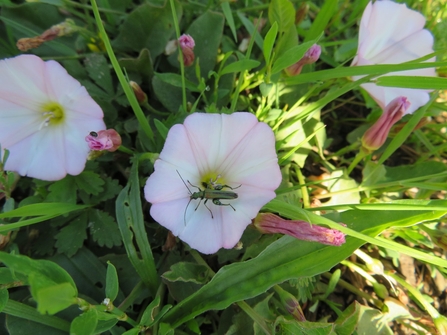At the moment field bindweed Convolvulus arvensis is in full flower. Despite its wide distribution and often being maligned as a particularly persistent garden ‘weed’, it really is worth a closer look.
Each flower is like the upturned bell of a French horn, unfurling like an umbrella or rather a parasol when the sun comes out. The brass section of a floral orchestra blasting out signals to insects to gather pollen.
The flowers often have very distinct candy stripe markings like the roof of a circular jousting tent, particularly when young before the colour has been bleached by the sun. Very cleverly the flowers scroll closed when the sun goes in.

